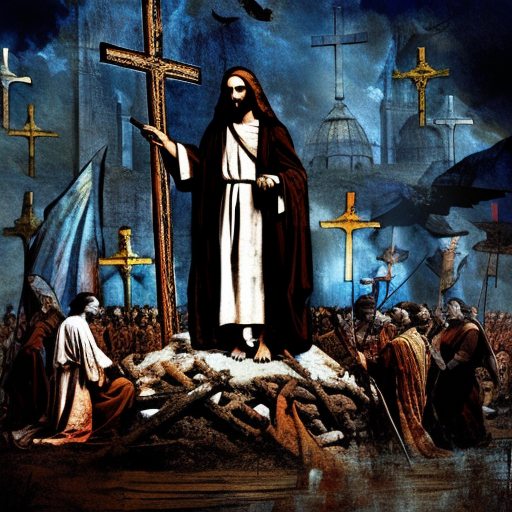One-line summary:
“Killing Jesus: A History” by Bill O’Reilly and Martin Dugard provides a comprehensive and captivating account of the life, death, and impact of Jesus Christ, exploring the historical, political, and cultural context of his time.
The Life and Ministry of Jesus
In “Killing Jesus: A History,” O’Reilly and Dugard meticulously reconstruct the life and ministry of Jesus Christ, drawing from historical records, biblical texts, and scholarly research. They delve into the political and social landscape of first-century Palestine, highlighting the tensions between the Jewish people and their Roman oppressors.
The authors paint a vivid picture of Jesus as a charismatic and enigmatic figure who challenged the religious establishment of his time. They explore his teachings, miracles, and the impact he had on his followers, as well as the growing threat he posed to both Jewish and Roman authorities.
The Political Climate and Crucifixion
O’Reilly and Dugard provide a detailed account of the political climate surrounding Jesus’ crucifixion. They delve into the power struggles between Roman leaders such as Pontius Pilate and Herod Antipas, as well as the role of influential Jewish figures like Caiaphas and Annas.
The authors explain how Jesus’ popularity among the masses and his claims of being the Messiah threatened the stability of the region. They describe the events leading up to his arrest, the trial before Pontius Pilate, and the ultimate decision to crucify him.
The Aftermath and Legacy
Following Jesus’ crucifixion, O’Reilly and Dugard explore the aftermath and the lasting impact of his life and death. They discuss the rise of Christianity, the spread of Jesus’ teachings, and the persecution faced by early Christians.
The authors also examine the role of key figures such as the apostles Peter and Paul in the early Christian movement. They shed light on the challenges faced by these early believers and the eventual triumph of Christianity as a major world religion.
Key Takeaways:
- “Killing Jesus: A History” provides a comprehensive and well-researched account of the life and death of Jesus Christ.
- The book explores the historical, political, and cultural context of Jesus’ time, shedding light on the tensions between the Jewish people and Roman authorities.
- O’Reilly and Dugard delve into the political climate surrounding Jesus’ crucifixion, highlighting the power struggles and the decision-making process that led to his execution.
- The authors also examine the aftermath of Jesus’ death, exploring the rise of Christianity and the lasting impact of his teachings.
“The story of Jesus of Nazareth is one of the most well-known and influential narratives in human history. His life, teachings, and death have shaped the course of civilization, inspiring countless individuals and shaping the beliefs of billions.”
In “Killing Jesus: A History,” Bill O’Reilly and Martin Dugard provide a captivating and well-researched exploration of the life, death, and legacy of Jesus Christ. Through their meticulous examination of historical records, biblical texts, and scholarly research, the authors offer readers a comprehensive understanding of the political, social, and cultural context in which Jesus lived.
The book not only provides a detailed account of Jesus’ life and ministry but also delves into the political climate of first-century Palestine. O’Reilly and Dugard highlight the tensions between the Jewish people and their Roman oppressors, shedding light on the power struggles and the decision-making process that ultimately led to Jesus’ crucifixion.
Furthermore, the authors explore the aftermath of Jesus’ death and the lasting impact of his teachings. They discuss the rise of Christianity, the spread of Jesus’ message, and the challenges faced by early Christians. Through their narrative, O’Reilly and Dugard emphasize the significance of Jesus’ life and death in shaping the course of human history.
Overall, “Killing Jesus: A History” offers readers a comprehensive and engaging account of the life, death, and impact of Jesus Christ. It provides valuable insights into the historical, political, and cultural context of his time, allowing readers to gain a deeper understanding of the man who has influenced billions of lives throughout history.












